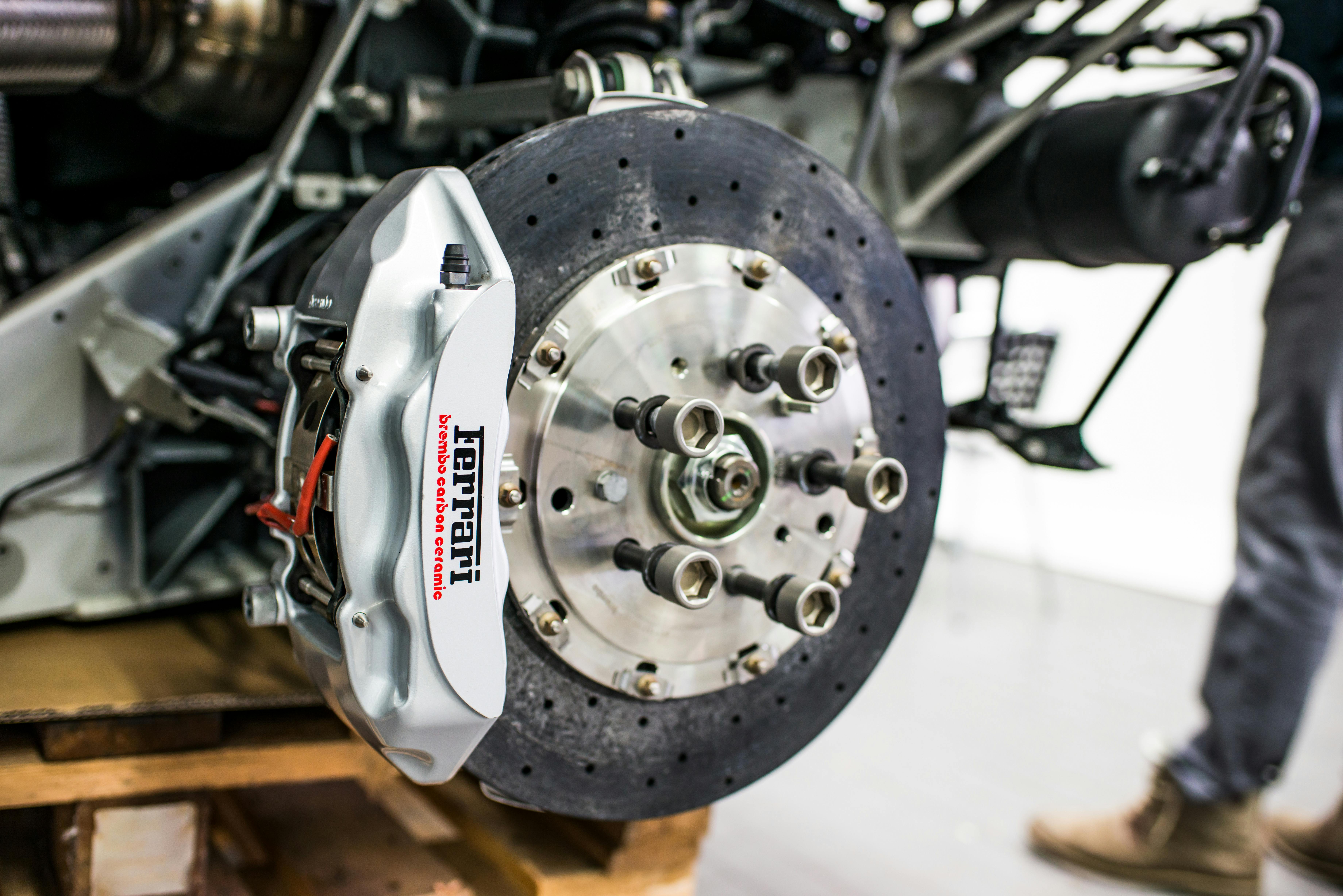Nine out of ten new businesses fail in their first year. This is an alarming statistic that, in fact, may be more myth than truth. However, recent data suggests the same trend but not as extreme. Based on Brian Headd and US Census data, a more realistic figure suggests that 62% of businesses close within the first six years of operation (Headd 2). This begs the question: What makes a business successful? By analyzing and dissecting the complexities of Lincoln Electric’s consistently stellar performance, as well as paying close attention to several interesting financial pitfalls, an answer may be found.
Value in the individual
An organization at its core is made up of people and teams. Now, which of these has the greatest influence on the success of that organization? More emphasis should be placed on the individual because he is the one who can be creative, motivated, skillful, efficient and responsive. The proper function of management is to extract these characteristics and encourage their growth in a productive environment. A large part of Lincoln Electric’s (LE) success can be attributed to this unique and effective management style, which ultimately leads to competitive advantage. Whatever economies of scale a large corporation like GE may offer, the higher level of productivity of a properly motivated individual production worker can easily offset it. This management style is further fostered through a combination of structural, strategic and cultural norms within LE.
Structurally, Lincoln Electric aims to flatten the hierarchical structure and eliminate non-functional middle management positions. To this end, LE has fostered an “open door” policy between production workers and executives and has created an Advisory Council that has worker representatives who meet with executives twice a month. Strategically, LE drives an integrated approach to maximize production and reduce costs. Although this seems straightforward and simple, the effectiveness is in the details. Cost reduction will be explored later, but to maximize production, Lincoln Electric turns to its motivated employees. However, these employees are not naturally motivated. This is the role of the James Lincoln Incentive Management System. This system provides a tool to motivate all employees through bonuses that redistribute a large part of the corporation’s annual profits. Two main results follow from this redistribution. First of all, there is a greater sense of ownership in the company from top to bottom because if the company as a whole does well, everyone is compensated respectively.
Second, there is increased personal performance. This increased performance is the result of a kind of silent competition within each work group. Each work group is assigned a specific dollar amount from the bonus pool, and bonuses are then distributed to members of that group based on their relative performance as measured by the semi-annual Merit Rating. Now Merit Rating’s role is to counteract some of the pitfalls of a strategy based on speed and efficiency. Generally, the result of an emphasis on speed is the sacrifice of quality and safety. Each principle of the Merit Rating (including Reliability, Quality, Production, and Ideas/Cooperation) is a reaction to common shortcomings of a traditional production worker. Being rewarded for attendance, quality of work and contribution of ideas in addition to your piecework leads to a complete end product that is produced to the right specifications in record time.
To increase the speed of production, LE places a strong emphasis on idea generation and worker input. This allows creative ideas and suggestions about the production process to spread throughout the corporation. As a result, there is a strong and steady increase in LE productivity per worker. The Merit system also serves to increase coordination by rewarding teamwork while also introducing an element that is historically known to be one of the greatest efficiency drivers of all time: competition. Although it seems that teamwork and competition would be in conflict, this is not the case. Since there are only a certain number of possible Merit Points available, there is competition for these points among the task force members. However, the total payment at the end of the year is divided based on the earnings of the corporation as a whole; therefore, encourage teamwork and the exchange of ideas. This complete Incentive Management System unifies the direction of the workforce and leads to a balanced and efficient set of objectives that produces a strong competitive advantage over rival companies. In a mercantile industry, it is the process, not the product, that must prevail and be differentiated. Lincoln Electric has found the perfect process, but is it a universal process that can be applied abroad?
Cost reduction and market expansion
The blind pursuit of profit can easily lead to poor decision making. That is why the means to create income is vital. The question is how does a company increase margins? There are two simple options: reduce costs or increase production through expansion and efficiency. Lincoln Electric has identified this dynamic duo and integrated it into the overall business strategy. To cut costs, LE uses a variety of sound business tactics. There are three shifts on the team, so it rotates constantly and allows no team downtime. This avoids having excess capacity that creates unnecessary overhead costs. In addition, LE has aimed to flatten the structure of the company and eliminate levels of organization that detract from the open communication environment established between workers and management. This reduces wage bills and ultimately increases the profit margin.
The guaranteed employment concept is another brilliant cost-cutting idea from James F. Lincoln. The cost of retaining employees on the payroll is less than the cost of recruiting and training motivated and creative workers. As a result, during recessions, LE did not lay off workers, but rather retrained them and sent them to other parts of the company. This would foster company loyalty and greatly reduce employee turnover, again lowering cost for Lincoln Electric through a variety of both quantitative and qualitative means. Finally, there is the concept of enhanced benefits limited benefits. This improvement was reflected in bonuses and piecework compensation that put more control in the hands of the individual with the allocation of money and compensated for their lack of benefits. LE’s approach to maximizing output was explored above, and the general consensus was a focus on developing a creative, motivated, and efficient production worker who consistently puts in more effort than a similar production worker at another company. Another option to increase production is expansion to other markets.
Lincoln Electric first expanded into Canada by opening a manufacturing plant in Toronto in 1925. Some twenty years later, LE Canada adopted the Incentive Management System (IMS) which includes its facets of annual bonus and piecework. Due to the similar cultural norms between the US and Canada, this adjustment flowed smoothly. However, poor decision making led to this application of IMS in other markets, including Europe and South America. The friction resulted because the cultural values of the production worker are different. Additionally, government regulation in Germany and Brazil led to significant adjustments that undermined LE’s incentive efforts. In Europe, workers valued benefits such as vacation time over annual bonuses. Annual bonuses were found to do little to increase the efficiency of individual production without the piecework aspect of IMS. In fact, piecework was illegal in Germany.
Obviously, if more planning or research had been done, this crucial fact would have been discovered and LE would have prevented expansion into Germany. The root of Lincoln Electric’s problems began with the rapid expansionist mindset of George Willis. The main problem was the speed of expansion. LE incurred long-term financial debt for the first time in the corporation’s history. The additional interest expense and ongoing liability greatly damaged future income statements. A study of Lincoln Electric’s consolidated income statement, as well as the balance sheet, reveals some interesting financial facts.
As of 1987, LE had no long-term debt. This ballooned along with the expansion drive in subsequent years to more than $220 million in 1992. As the income statement suggests, the height of this long-term debt coincides with Lincoln Electric’s first net loss. The inability to control spending and keep costs low (LE’s historical competitive advantage) undermined the desire to increase production through expansion. Another interesting fact is that while sales leveled off in 1992 and 1993, costs and overhead did not match up, so they continued to rise until 1994, which is also the first recorded net income after the 1992-93 losses.
This analysis of cost reduction and market expansion raises several questions. How can Lincoln Electric avoid similar losses in the future? How closely is the 1992-93 net loss correlated with geographic expansion? What can Lincoln Electric do in the future to maintain its historic rapid growth and competitive advantage?
recommendations
So the time has come to decide on Indonesia. Is Indonesia ready and willing to match Lincoln Electric’s strategy, or will it reject the incentives that are the key competitive differentiators? After analysis of the economic and financial situation in Indonesia, I recommend a slow expansion in its welding market. The current distribution network of Tira and SSHJ must be modified so that it can be refined and expanded. Although smaller, SSHJ’s strategy matches LE’s more than Tira’s. I suggest using only SSHJ vendors because they highlight the cost savings and benefits of Lincoln Electric products while aiming to attract new customers through LE’s name recognition and high-quality reputation. LE should use co-option to provide the company with local contacts and recommendations so that past mistakes in incentive management can be addressed and changed. The exact details of my recommended Indonesian expansion are specified in the following list:
o Combination of piece work and salary with a salary that is slightly less than the average salary of industrial workers in Indonesia of 250,000 rupees.
o There is no annual bonus because the economy is so fickle and volatile that it probably would not affect daily effort.
o Guaranteed employment would exist through the understanding that economic change would not threaten the jobs of workers. Job security would foster intense loyalty and be an important factor in building a consistent workforce.
With this comprehensive Indonesian market entry strategy, I feel that Lincoln Electric will only succeed. This strategy embraces the strengths of LE’s Cleveland incentive system while adapting it to maximize profits in the specific Indonesian environment. Gillespie should not be concerned when presenting these plans to his colleagues because the foundation of this plan is rooted in Lincoln Electric’s historically successful traditions and has been adjusted to compensate for differences that hampered earlier global expansion.









